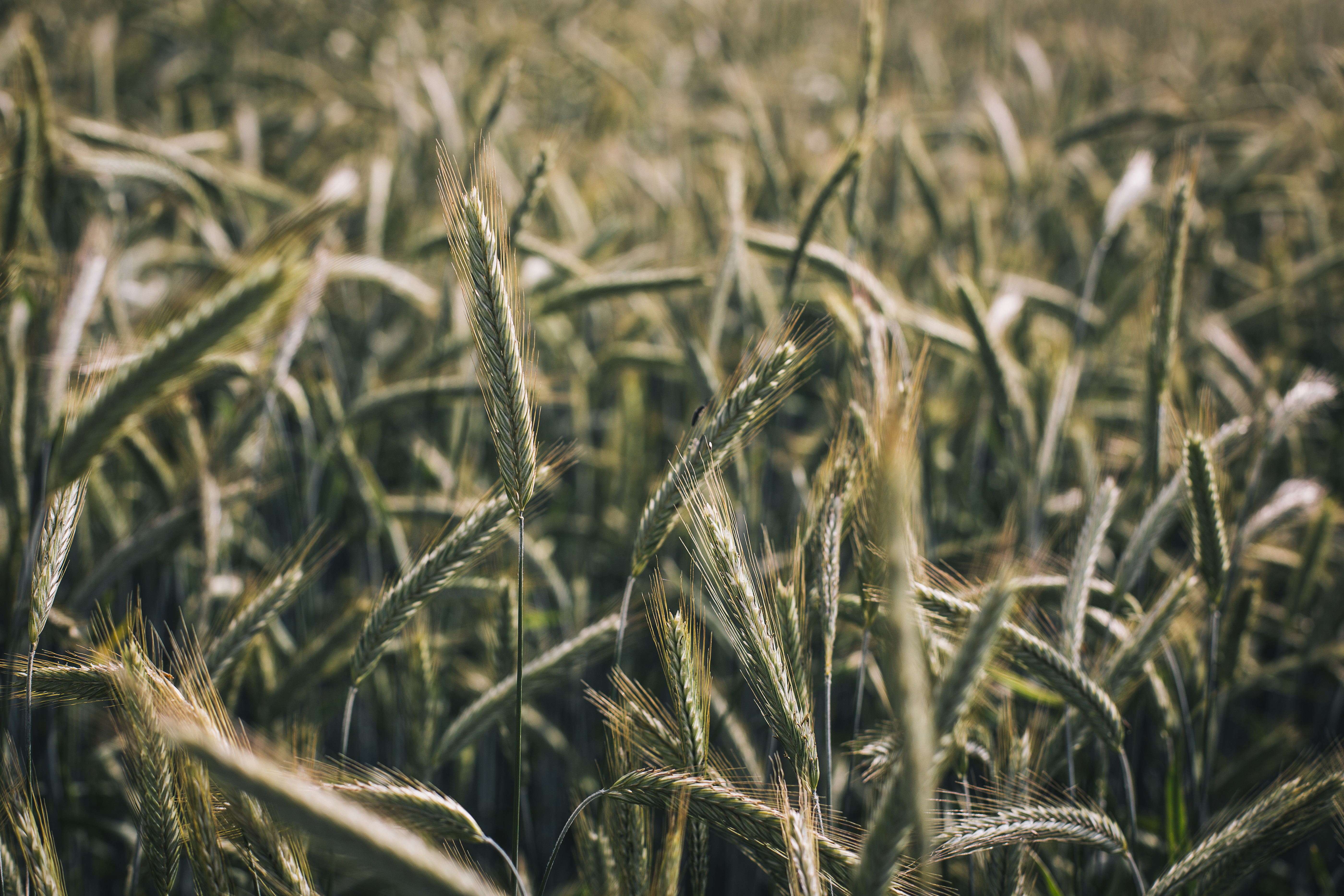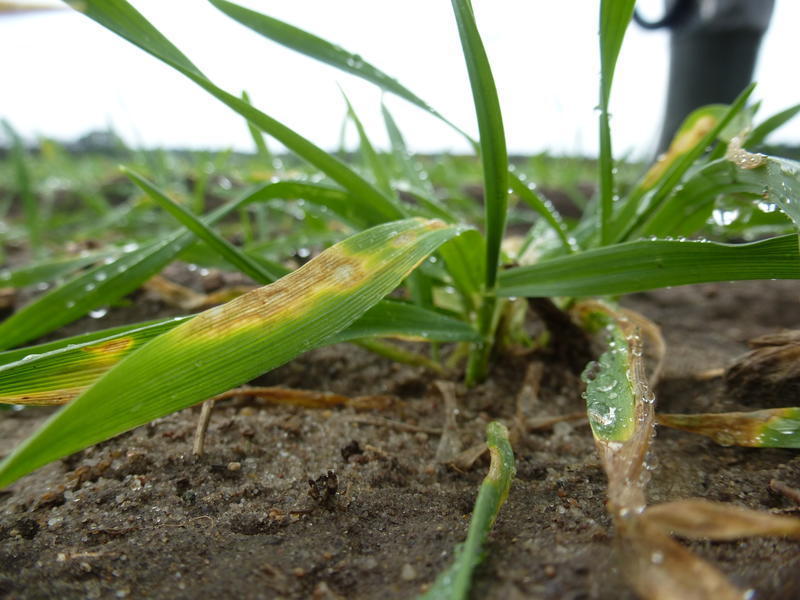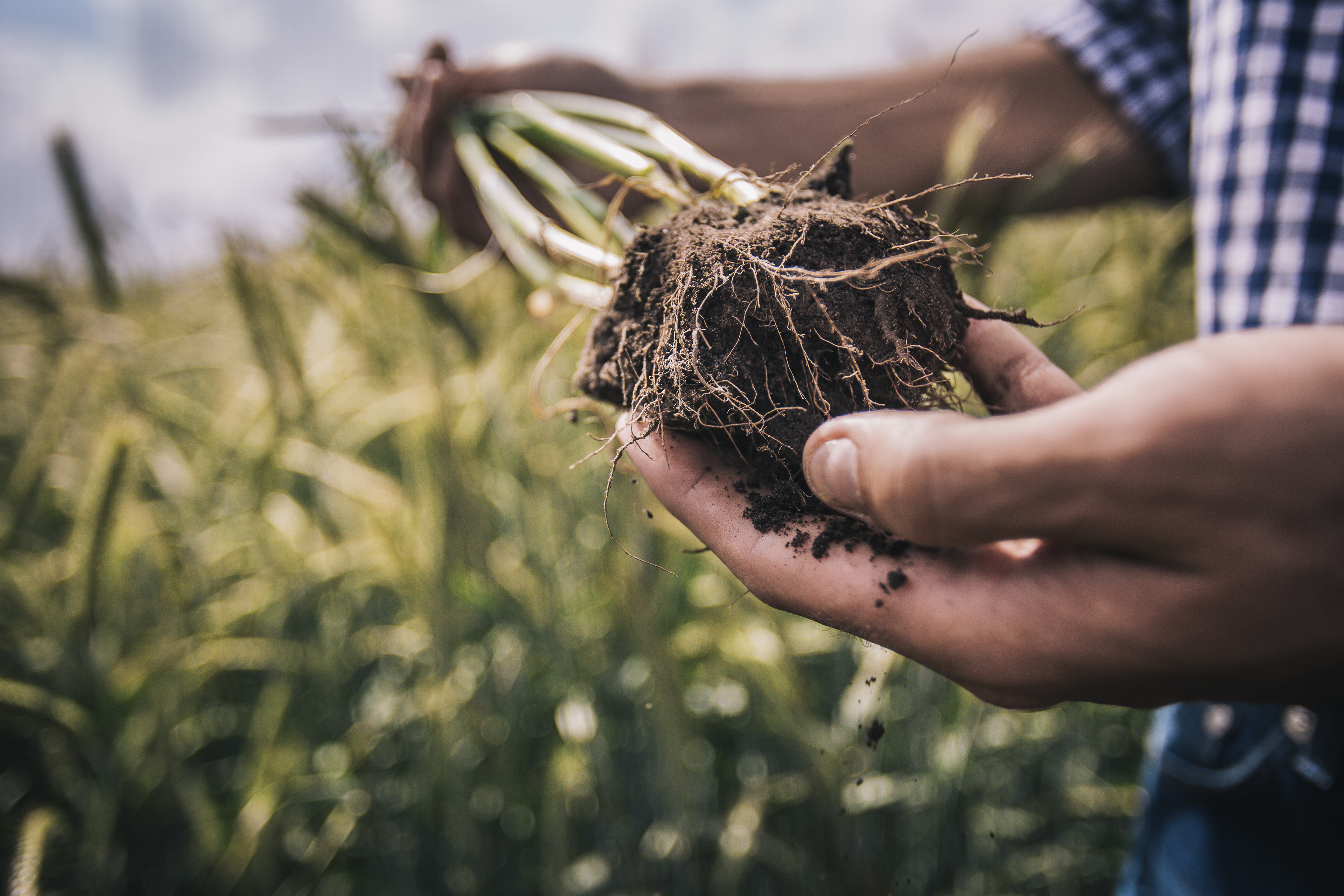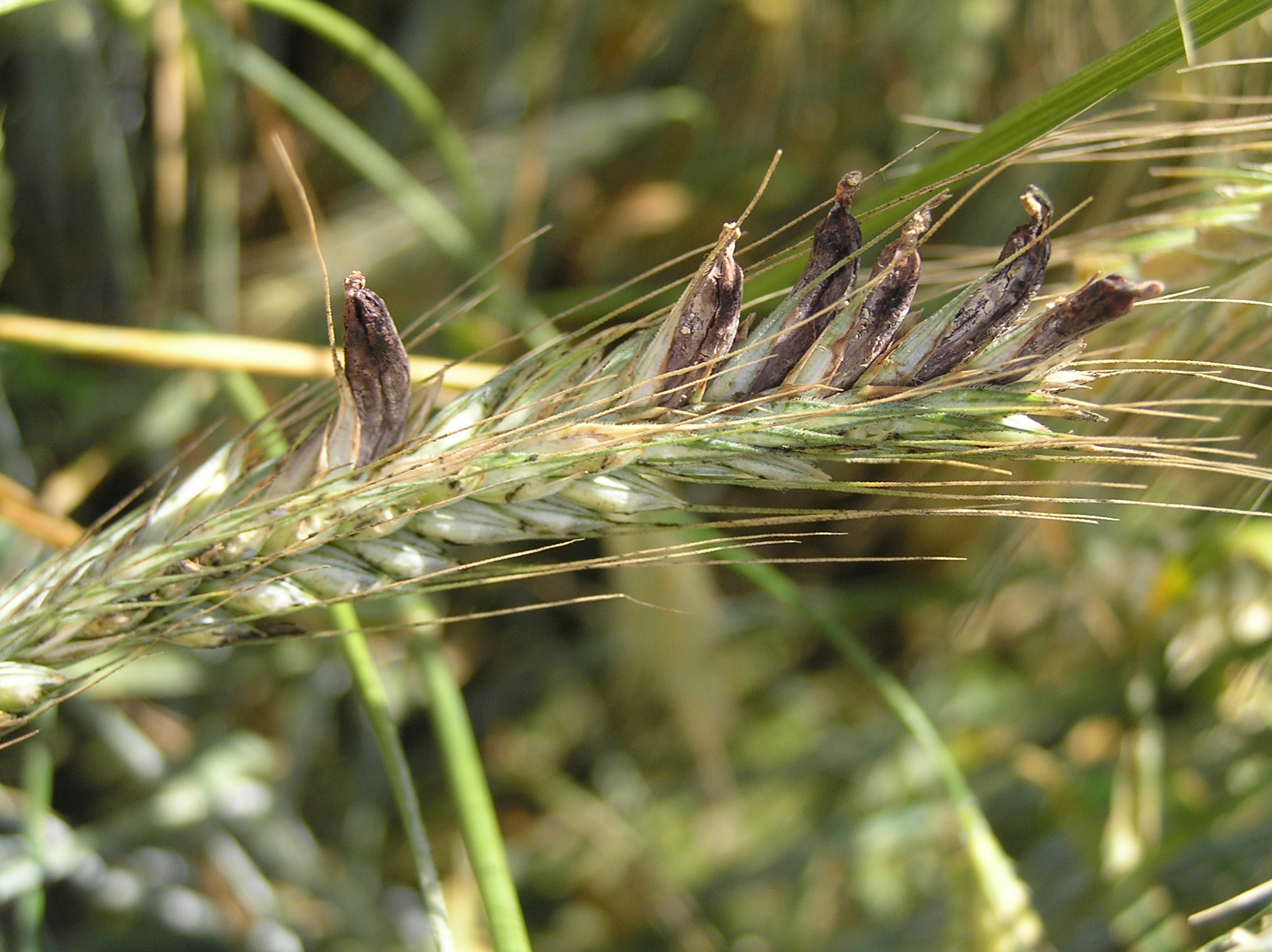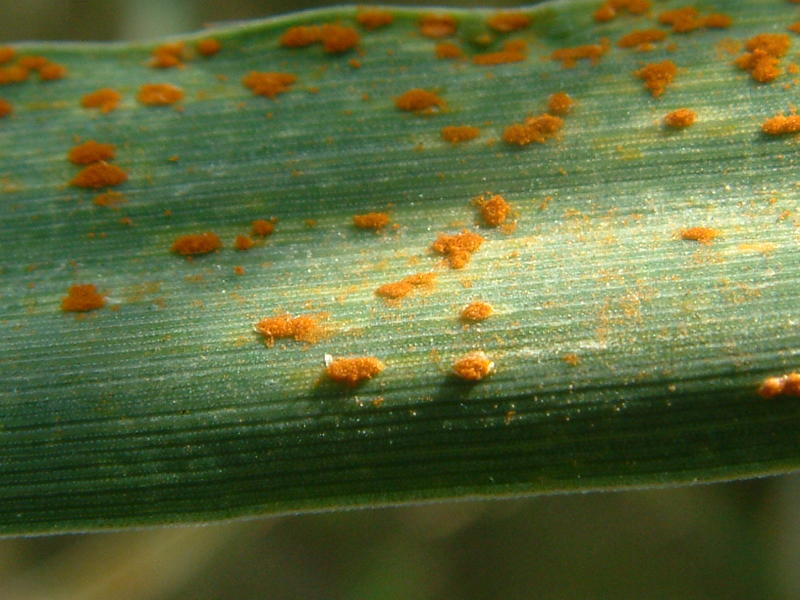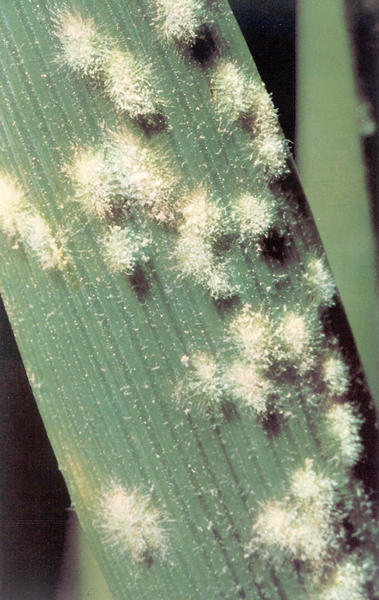Rhynchosporium secalis is one of the most important diseases of winter barley, but rye is also affected by this pathogen.
(Rhynchosporium secalis)
Meaning
Rhynchosporium secalis is one of the main diseases of winter barley, but rye is also affected by this pathogen. On winter rye, the lower leaves are usually affected. However, epidemic spread to upper leaves, relevant for the yield, rarely takes place, since rye creates unfavourable conditions for spread because of its massive growth in length. The yield losses in individual years and locations may amount to 10-15% or more in individual years.
Main symptoms
The symptoms of infection generally appear on lower leaves in the form of elongated grey-white spots with faint, dark marginal zones separating the necrosis from the healthy tissue. Primary infections start from the mycelium, which persists in the leaves or grains of affected plants. The main source of infection is infected crop residues lying on the soil surface. Infection takes place in the presence of low temperatures (10 - 20 °C), prolonged leaf moisture and low light intensity. Spore dispersal takes place exclusively through conidia distributed by rain splashes. Rhynchosporium is thus a site-restricted pathogen. Temperatures between 15 °C and 20 °C leaf wetness exceeding 140 degree-hours (at 10 °C for 14 hours or more) are required. Initial symptoms of disease appear in rye about 200 degree-days after infection, i.e., at a mean temperature of 15 °C, a new generation of spores appears after only two weeks.
